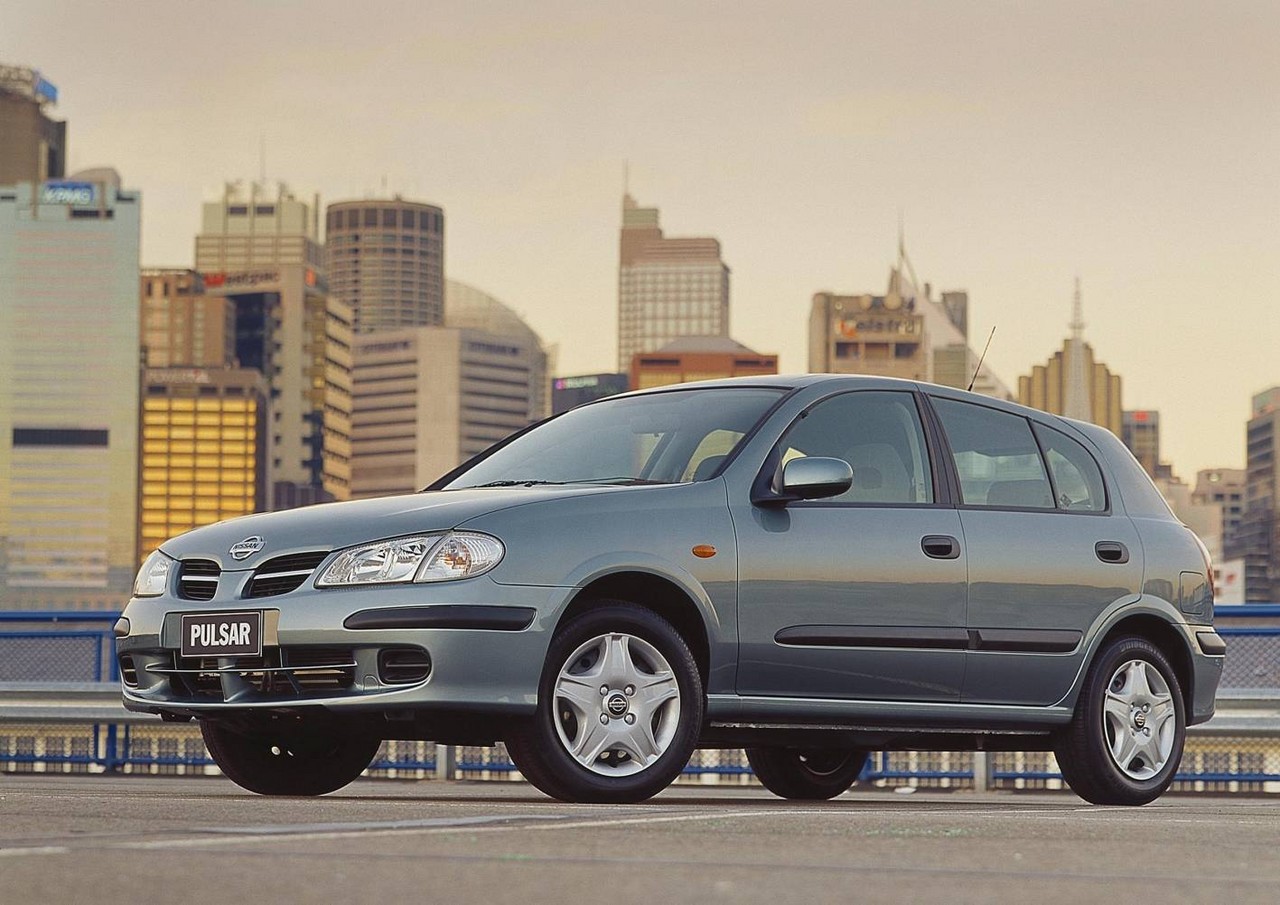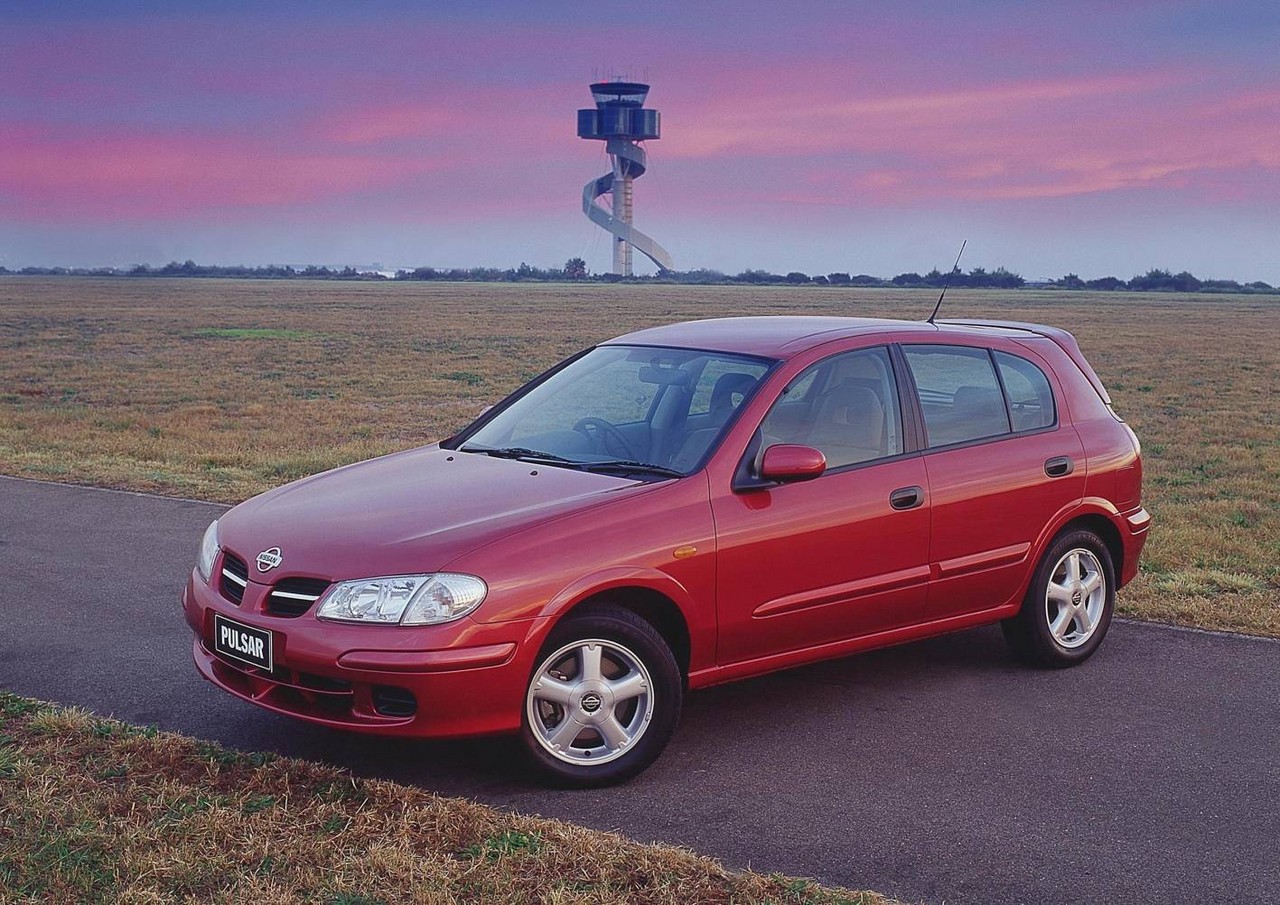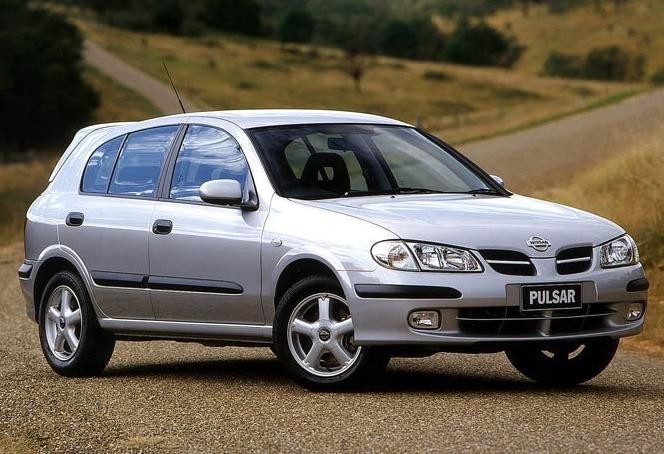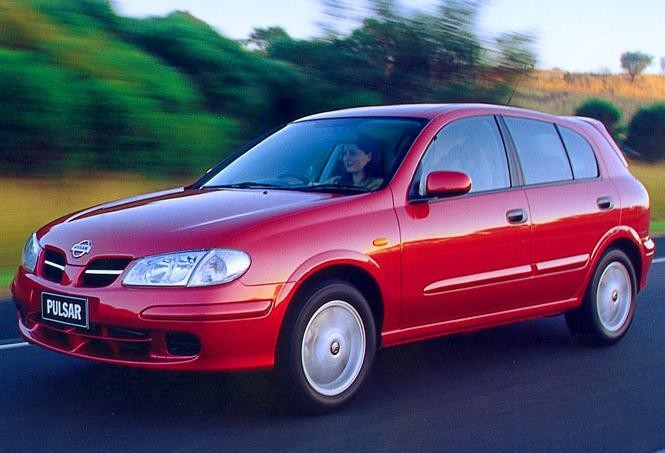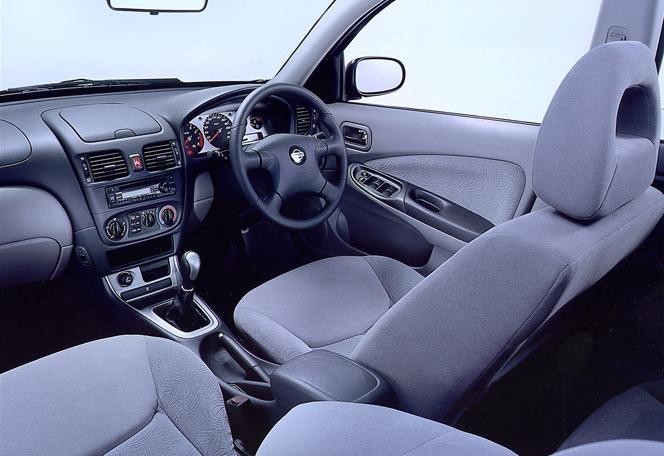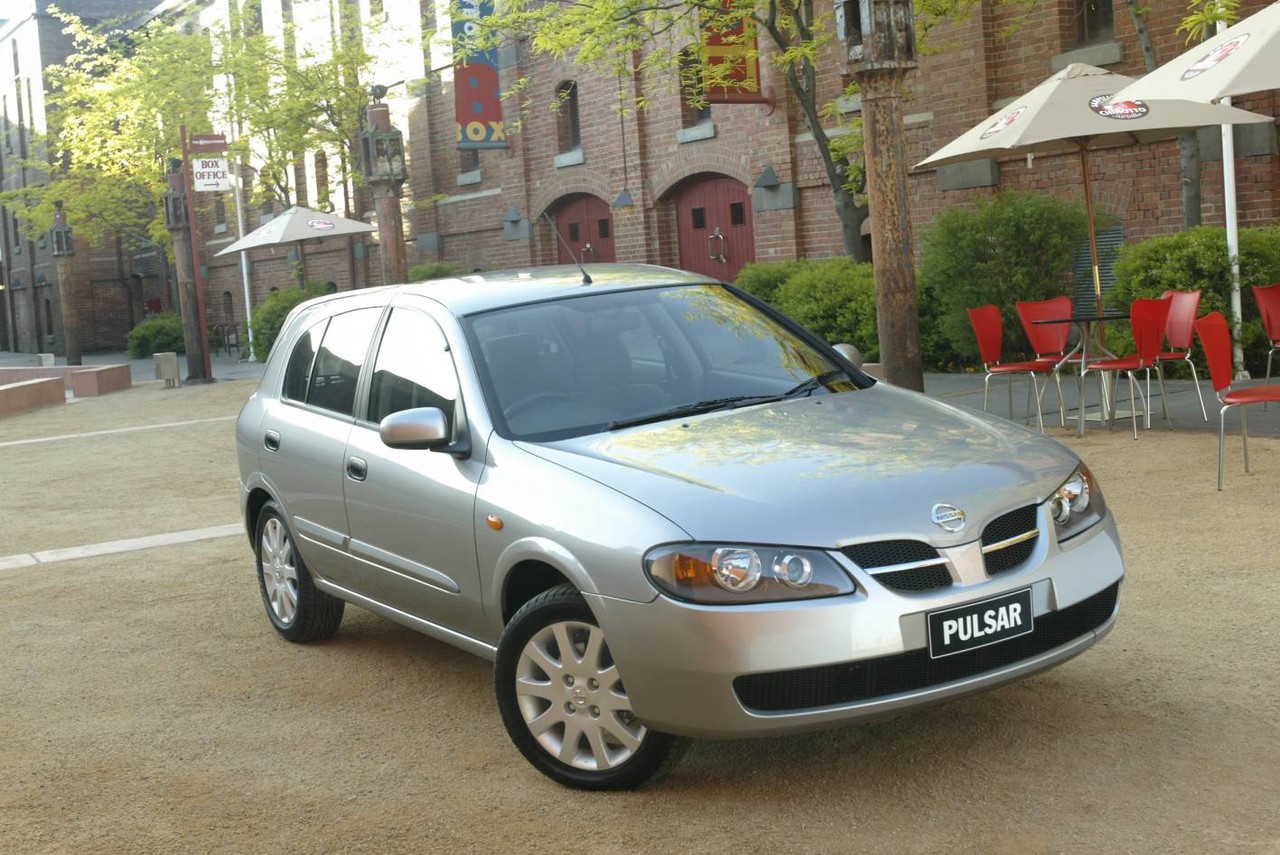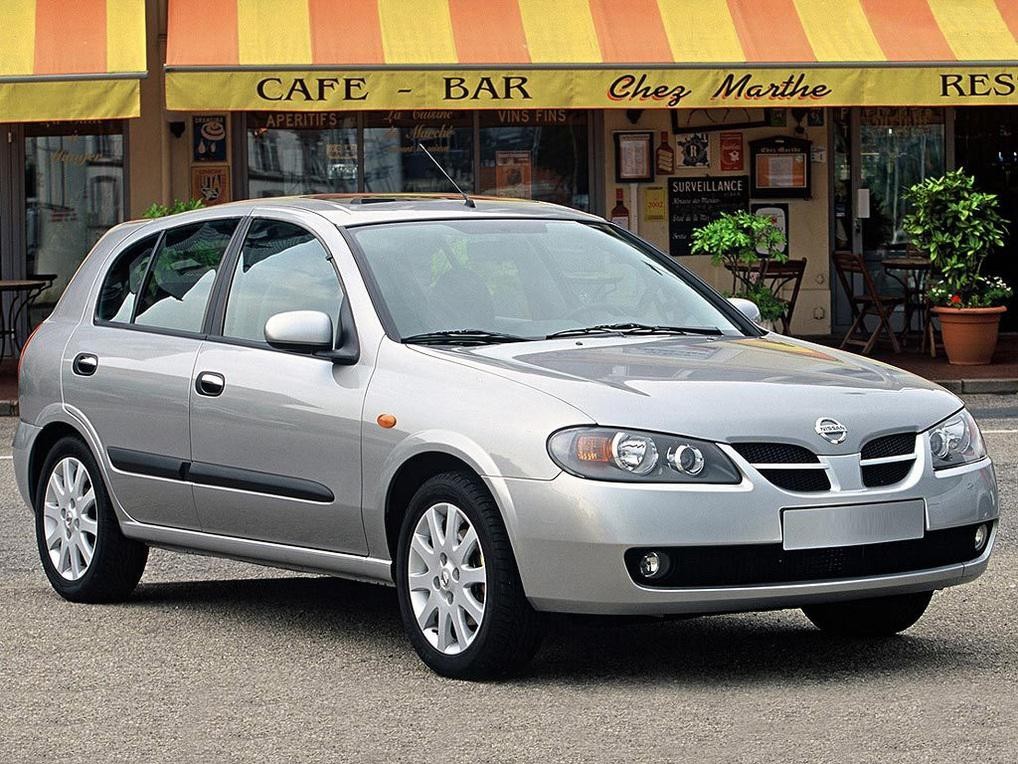
- Durable powertrains
- Comfortable front seats
- High standard of interior fit
- Soft suspension provides comfortable ride…
- … but is upset by larger bumps
- Indecisive automatic transmission at freeway speeds
- Light steering lacks feel
- Limited rear seat legroom
- Rear seat doesn’t fold
Review: Nissan N16.I Pulsar hatch (2001-02)
Overview
Released in June 2001, the Nissan N16 Series I (N16.I) Pulsar hatch was a five-door, front-wheel drive vehicle vehicle. Manufactured in Sunderland, England, the N16 Pulsar hatch was powered by a 1.8-litre four-cylinder petrol engine – with double overhead cams, four valves per cylinder and variable valve timing – that was mated to either a four-speed automatic or five-speed manual transmission. Furthermore, the Pulsar hatch range consisted of ST and Q variants.
The closely-related N16 Pulsar sedan was released in July 2000 and exported from Japan – as a result, it had different equipment levels and has been revised separately.
Compared to the N15 Pulsar , the N16 Pulsar hatch was 64 mm longer (at 4184 mm), 16 mm wider (1706 mm) and 53 mm taller (1448 mm), though wheelbase length was unchanged (2535 mm). Furthermore, body rigidity increased by 30 per cent. The N16 Pulsar was fitted with MacPherson strut front suspension and multi-link beam rear suspension.
| Variants | Engine | Trans. | Peak power | Peak torque |
|---|---|---|---|---|
| ST, Q |
1.8-litre petrol I4 (QG18DE) |
4sp auto, 5sp man. |
92 kW at 5600 rpm | 161 Nm at 4400 rpm |
Safety equipment
Standard safety equipment for the N16.I Pulsar hatch included dual front airbags and front seatbelts with pretensioners and load limiters.
Euro NCAP crash testing
In Euro NCAP crash testing , a 2001 Nissan Pulsar (sold in Europe as the Almera) – that was fitted with dual front airbags, front side airbags and curtain airbags – received a four star adult occupant protection rating with a score of 26. In the frontal offset crash test, protection of the driver’s head was rated as good, though chest and left thigh protection were rated as marginal, and right thigh and left lower leg protection as weak. In the side impact test, the chest and head airbag did not fully deploy.
Features
Standard features for the Pulsar ST included 15-inch steel wheels with 185/65 R15 tyres, a four speaker sound system with CD player, air conditioning, remote central locking, power mirrors, cargo nets, tilt adjustable steering wheel and an immobiliser.
The Pulsar Q was further equipped with 15-inch alloy wheels with 195/60 R15 tyres, a leather-wrapped steering wheel, rear spoiler and power windows.
Review: Nissan N16.II Pulsar hatch (2002-05)
Overview
Released in November 2002, the N16 Series II (N16.II) Pulsar hatch introduced updated styling and improved safety equipment. Visually, the N16.II Pulsar hatch could be identified by its new grille, headlight protectors, tail-lights and cabin trim.
| Variants | Engine | Trans. | Peak power | Peak torque |
|---|---|---|---|---|
| ST, Q |
1.8-litre petrol I4 (QG18DE) |
4sp auto, 5sp man. |
92 kW at 5600 rpm | 161 Nm at 4400 rpm |
Safety equipment
Compared to its N16.I predecessor, safety equipment for the N16.II Pulsar was improved with ABS and brake assist fitted as standard across the range.
ANCAP crash testing
In ANCAP crash testing , a 2003 N16.II Pulsar hatch – equipped with dual front airbags – received a three star adult occupant protection rating with a score of 22.34. In the offset crash test, protection from serious chest and leg injury was marginal for the driver and foot protection was poor. In the side impact test, there was a moderate risk of serious chest injury for the driver.
Features
Standard features for the N16.II Pulsar hatch were initially unchanged. From May 2004, however, the Pulsar Q was fitted with front fog lights and a power sunroof.
Related links
